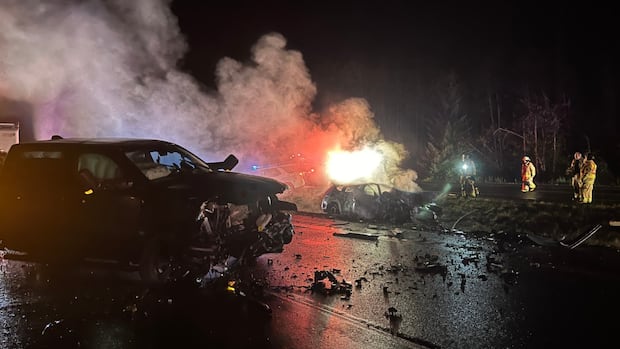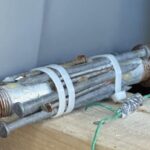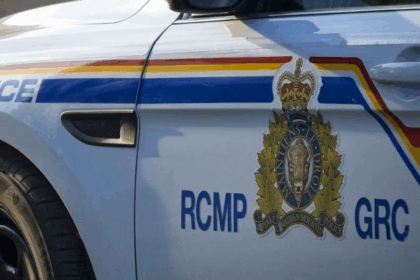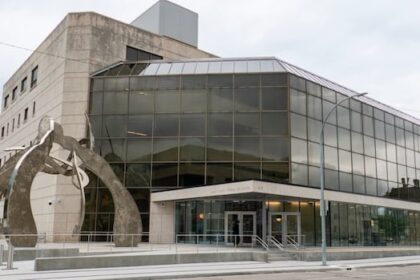British ColumbiaA Vancouver Island fire department is asking drivers whose vehicles are on fire to pull over into the centre median lane on highways this summer if it is safe to so, as they can unintentionally spark wildfires amid drought conditions.Deep Bay Fire Rescue on Vancouver Island says cars can spark wildfires due to tinder-dry conditionsAkshay Kulkarni · CBC News · Posted: Aug 14, 2025 7:00 AM EDT | Last Updated: 8 hours agoA picture of a car fire shared by the Deep Bay Fire Rescue department on Vancouver Island. The department says drivers whose vehicles are on fire should pull over into the centre median on divided highways, if possible, and avoid grass amid wildfire season. (Deep Bay Fire Rescue/Facebook)A Vancouver Island fire department is asking drivers whose vehicles are on fire to pull over into the centre median on highways if it is safe to do so, as they can unintentionally spark wildfires amid drought conditions.Deep Bay Fire Rescue, a volunteer-run department located northwest of Qualicum Beach, issued the advice to drivers on the Inland Island Highway in a Facebook post on July 30.That was the same day a car fire was suspected to have started a major wildfire near Peachland in the Okanagan, which prompted the closure of Highway 97 and the Okanagan Connector and led to the evacuation of 400 homes.Firefighters say vehicles can inadvertently spark blazes if they’re parked on the side of roads, which can be exacerbated by drought conditions and high winds. In 2024, there were 68 vehicle-related wildfires in B.C., according to the provincial Wildfire Service. This year, they’ve counted 36, although the true number may be higher as investigations are ongoing. A firefighter says drivers should find an area with a large amount of concrete to pull over, if possible. (Deep Bay Fire Rescue/Facebook)”If you’re on a divided highway where you have room to pull into the [median], especially during the dry season, it’s good to pull into the [median],” said George Lenz, the volunteer chief of Deep Bay Fire Rescue. “Because then you’re less apt to spread fire into the bush surrounding the highways.”Lenz said having a car fire in the centre median also gives firefighters an easier route to access the vehicle. Being parked on the side of the road could mean an unnecessary highway closure.”You don’t want to interrupt the flow of traffic any more than you absolutely have to,” Lenz said.WATCH | Fire in Okanagan leads to highway closures: 400 properties ordered evacuated in B.C.’s Okanagan due to wildfireA wildfire burning out of control between West Kelowna and Peachland prompted the evacuation of about 400 properties on Wednesday. Around 200 additional properties were put under evacuation alert. CBC’s Yasmine Ghania has the latest.The fire chief acknowledged the advice would not apply on a two-lane highway, but said that, amid dry conditions, drivers should try to find an area to pull over that isn’t immediately close to grass or vegetation, like a pullout.In addition to battling blazes sparked by vehicle fires, the department has also had to deal with fires that started with grass ignited by hot exhaust pipes on vehicles pulled over to the side of the road, he said. The B.C. Wildfire Service said that failed catalytic converters, brake failure and sparks caused by vehicle parts dragging on the road can also cause wildfires.”We have had a couple of fires that have spread well into the grass. We’re talking maybe a half an acre of land grass area around [it] that we’ve been able to extinguish,” he said.”If it’s really dry this time of year, it’s difficult to say how fast that fire is growing and which way the wind’s blowing and how hard the wind is blowing,” he added. “It could be into the woods before you know it.”Turn off engine, fire chief advisesDan Derby, the regional fire chief in Trail, B.C., and the president of the Fire Chiefs Association of B.C., advises drivers to pull over safely and shut off their vehicle’s engine if they suspect a fire.”By turning off the engine, you’re cutting the fuel supply,” he said. “This is, of course, more challenging in, like, an EV battery vehicle that could be having some sort of issue — but we always recommend turning off the engine, [evacuating] the vehicle.”Derby added that drivers shouldn’t try to go back into a vehicle for personal belongings, and should avoid opening the vehicle’s hood to stop oxygen from entering and feeding the fire.Statistics Canada shows there was an average of just over 1,110 vehicle fires in the country every year from 2017 to 2021.CBC News has reached out to the B.C. Wildfire Service to find out if they specifically track how many wildfires were caused by vehicle fires in the province.Under B.C.’s Wildfire Act, off-road vehicles on provincial land are required to have a spark arrestor.Newer vehicles likely already have the small device, which is designed to prevent sparks from exiting the tailpipe. Owners of older models without arrestors need to have them installed.The service says around 30 per cent of wildfires in B.C. last year were sparked by human activity.ABOUT THE AUTHORAkshay Kulkarni is an award-winning journalist who has worked at CBC British Columbia since 2021. Based in Vancouver, he is most interested in data-driven stories. You can email him at akshay.kulkarni@cbc.ca.With files from Hayley Carolan
Car on fire? B.C. fire department says to pull into centre median amid wildfire risk











